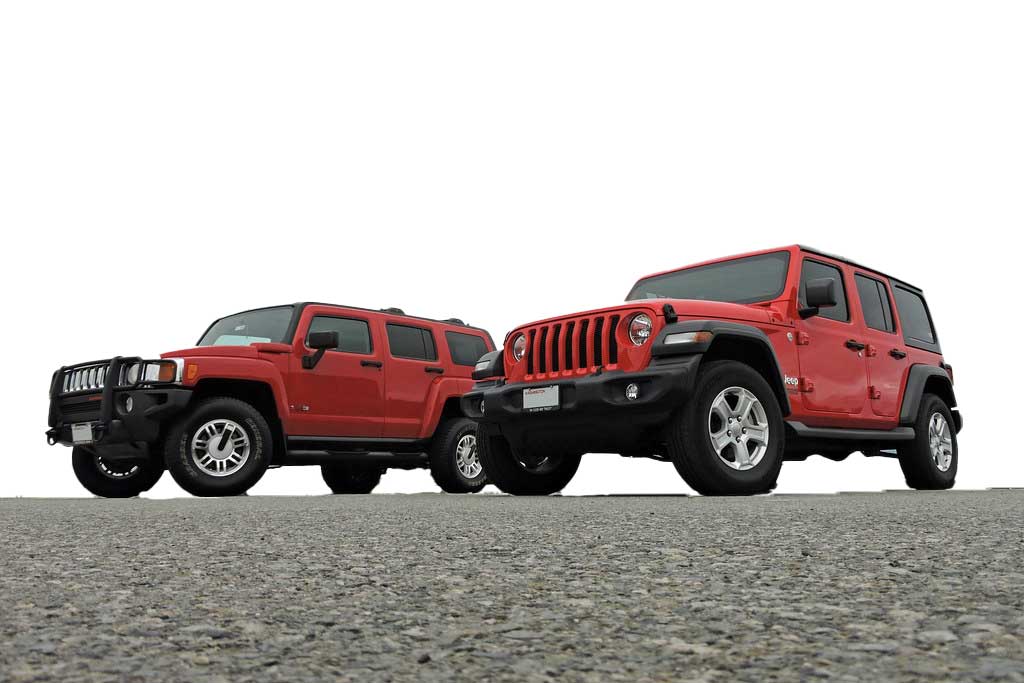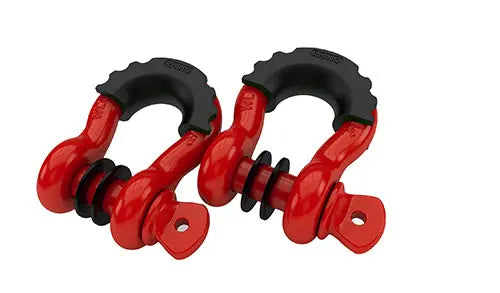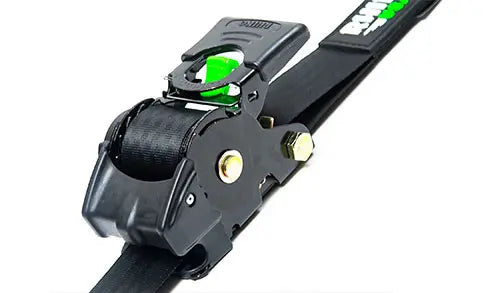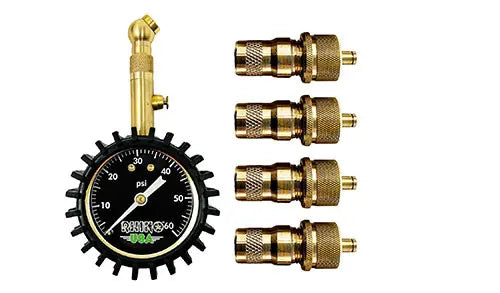
Jeep vs Hummer: A Comprehensive Comparison
Jeep and Hummer have both earned iconic status in the automotive world, each with their own distinct historical significance and brand identity. Jeep, known for its roots in World War II military vehicles, has long been synonymous with ruggedness and off-road capabilities. Hummer, on the other hand, started as a civilian version of the military Humvee, creating a powerful and bold image that became popular in the early 2000s.
This article aims to provide a comprehensive comparison of Jeep and Hummer vehicles to help you make an informed decision. As we delve deeper into various aspects such as performance, off-road capabilities, and available models, you'll gain further insight into what sets these two automotive giants apart and which one would better cater to your needs. Rest assured that the information provided is based on a combination of personal knowledge and accurate search results, offering you unbiased and reliable insights.
History and Legacy
Jeep: The roots of Jeep go back to World War II, when the U.S. Army needed a lightweight, rugged, and versatile vehicle for use in various combat conditions. The military-grade Willys MB and Ford GPW quickly became iconic symbols of the war effort, earning the nickname "jeep."
Over the years, Jeep evolved as a brand, transitioning from its military origins to a prominent player in the off-road and recreational vehicle markets. The brand still retains some of the original design features, such as the unmistakable vertical slat grille and round headlights. Its flagship models, like the Wrangler and Grand Cherokee, continue to be popular choices for customers seeking adventure and capability.
Hummer: Hummer, on the other hand, originated from the High Mobility Multipurpose Wheeled Vehicle (Humvee) used by the US military since the late 1980s. Its high demand and off-road capabilities led to its adoption in various military operations, including the Gulf War in the 1990s. The civilian version, branded as "Hummer," was introduced under AM General ownership and later bought by General Motors.
When comparing the historical contexts of Jeep and Hummer, their military beginnings are a common thread. However, while Jeep has maintained its focus on recreational and off-road vehicles, Hummer had toned down its aggressive, military-inspired design in favor of more consumer-oriented models, like the H2 and H3. Unfortunately, due to factors such as public perception and a changing automotive landscape, the Hummer brand was discontinued in 2010.
Cultural impact: Both Jeep and Hummer have left significant marks on global automotive culture. Jeep remains a symbol of freedom and adventure, with a strong sense of community among its owners. Hummer, generally viewed as a status symbol in the 2000s, was often associated with extravagance and excess due to its size and high price tag. However, Hummer's recent revival as an all-electric brand under GMC offers an opportunity for a new chapter in its story.
In summary, the histories of Jeep and Hummer are both rooted in their military backgrounds but followed distinct paths as they evolved into consumer brands. Their legacies are a testament to their original designs' versatility and adaptations to suit the changing needs and preferences of vehicle enthusiasts.
Design and Aesthetics
When it comes to the design philosophy of Jeep vehicles, you'll notice a focus on ruggedness and utilitarian appeal. Jeep's iconic and unmistakable design features a seven-slot grille, round headlights, and trapezoidal fender flares. This design language emphasizes the brand's off-road heritage and capability.
On the other hand, Hummer vehicles boast an imposing and aggressive styling. With their wide stance, bold front grille, and rectangular shape, Hummers are designed to make a statement. Their military-inspired design and body-on-frame construction give them the appearance and structure to handle extreme conditions, reinforcing their tough image.
-
Jeep Design Features:
- Rugged and utilitarian appeal
- Seven-slot grille
- Round headlights
- Trapezoidal fender flares
-
Hummer Design Features:
- Imposing and aggressive styling
- Wide stance
- Bold front grille
- Rectangular shape
The design choices made for both Jeep and Hummer vehicles not only reflect their respective brand identities, but also influence their functionality and perception. Jeep's utilitarian design allows for better maneuverability and flexibility in off-road situations. The angled wheel arches and high ground clearance provide optimal approach and departure angles, making it easier for you to tackle challenging terrains.
In contrast, the design of Hummer vehicles is intended to convey dominance and power. With their solid construction and distinct style, they are perceived as being able to withstand rough conditions. However, their larger size and bulkier design might limit their ability to navigate narrow trails or tight spaces compared to their Jeep counterparts.
Ultimately, the design and aesthetics of Jeep and Hummer vehicles cater to specific off-road needs and preferences. While Jeep's design enhances its practical off-road capabilities, Hummer's aesthetics emphasize a more commanding and robust presence.
Performance and Off-Road Capabilities
When it comes to performance, both Jeep and Hummer vehicles offer impressive off-road capabilities that cater to the needs of adventurous drivers.
In the Jeep lineup, models like the Wrangler are known for their exceptional off-road prowess. They offer excellent maneuverability and versatility, thanks to features such as high ground clearance, sturdy build, and robust 4x4 systems. For example, the Jeep Wrangler is equipped with a 3.8-liter V6 engine, producing 202 HP and 237 lb-ft of torque, which is more than adequate for tackling challenging terrains.
On the other hand, Hummer vehicles are built with advanced suspension systems and traction control features that enhance their off-road capabilities. Some models, like the Hummer H3, boast a slightly more powerful engine compared to their Jeep rivals. With a 3.7-liter inline 5-cylinder engine delivering around 242 HP and 242 lb-ft of torque, the H3 can easily handle various off-road conditions.
To further improve your off-road experience, different variations of both Jeep and Hummer models may come equipped with:
- Rock rails: Offer added protection to the underside when driving over rocky terrain.
- Skid plates: Shield the vital components under your vehicle from damage caused by rough, uneven surfaces.
- Locking differentials: Enhance traction on slippery surfaces by forcing both wheels on an axle to rotate at the same speed.
- All-terrain tires: Provide improved grip and control on a variety of surfaces including mud, sand, and rocks.
In real-world performance scenarios, both Jeep and Hummer vehicles have demonstrated their ability to conquer a wide range of terrain and weather conditions. From traversing rocky hillsides to navigating muddy trails, these rugged off-road machines are built to make your adventure more exciting and enjoyable. However, it's essential to keep in mind that each model will handle these conditions differently, so it's crucial to carefully assess their individual performance attributes before making a decision.
Remember, your choice between Jeep and Hummer ultimately depends on your personal preferences, needs, and driving style. Both brands offer exceptional off-road performance, but the nuanced differences in their handling, suspension systems, and other features may impact your overall experience. By understanding their performance and off-road capabilities, you can make an informed decision that suits your lifestyle.
Technology and Innovation
As you explore Jeep vehicles, you'll notice they are packed with a variety of technologies to enhance your driving experience. They're armed with advanced 4x4 systems like the Selec-Terrain® Traction Management System, which automatically adjusts your vehicle's traction depending on the terrain you're driving on. Additionally, Jeep's infotainment systems, such as Uconnect®, are there to ensure you stay connected and entertained while you conquer the great outdoors.
In contrast, Hummer models, specifically the newly anticipated all-electric Hummer EV, have utilized technology to propel their vehicles into the future. With impressive electric drivetrains boasting power and range, these Hummers are committing to sustainable mobility options. Furthermore, Hummers are known for their adaptive suspension systems such as Adaptive Air Ride, which adjusts your vehicle's height while off-roading for optimal clearance, and the e4WD Torque Vectoring system, which distributes power based on the terrain and conditions.
Safety is a priority for both Jeep and Hummer vehicles as they integrate cutting-edge safety technologies. In Jeeps, you'll benefit from features like Forward Collision Warning, Blind Spot Monitoring, and ParkSense® Rear Park Assist to aid you in navigating various driving situations. Similarly, the Hummer EV lineup offers a suite of safety features, such as Super Cruise™, which is a hands-free driver assistance system, and UltraVision, which provides multiple underbody camera angles for off-road navigation.
In terms of comfort and convenience, both Jeep and Hummer vehicles excel. Jeeps offer interiors with refined materials and features such as heated and ventilated seats, dual-zone automatic temperature control, and versatile storage options. Hummer models also come equipped with premium interiors, including adjustable MultiPro Tailgate configurations for added utility, and the Infinity Roof, which allows for an open-air driving experience.
As you can see, technology and innovation play crucial roles in enhancing the driving experience, comfort, and convenience of both Jeep and Hummer vehicles. Whether navigating off-road terrains or enjoying a connected and entertaining ride, these vehicles have the features that cater to your preferences and needs.
Environmental Impact and Sustainability
When considering Jeep vehicles, an important aspect to address is their environmental impact, mainly in terms of fuel efficiency, emissions, and sustainability initiatives. In recent years, Jeep has been making strides to reduce its vehicles' environmental impact. For instance, the redesigned 2018 Jeep Wrangler had a 15% lower Global Warming Potential (GWP) than its predecessor, according to FCA's analysis. Moreover, the Jeep Wrangler 4xe serves as a prime example of their efforts to incorporate eco-friendly technologies - it is, in fact, considered one of the most capable eco-friendly vehicles on the planet.
Moving on to Hummer vehicles, their environmental impact has gained significant attention, particularly due to their historical reputation for low fuel economy and emissions. However, recent developments indicate a shift in direction toward a more sustainable future. The 2024 GMC Hummer EV, for example, represents the brand's commitment to environmental responsibility through the introduction of electric technology into their vehicle lineup.
In terms of sustainability efforts, both Jeep and Hummer have been working to integrate eco-friendly technologies and practices into their respective vehicles:
-
Jeep:
- Wrangler 4xe: Combines the legendary off-road capabilities of Jeep vehicles with eco-friendly design.
- Sustainability Initiatives: Aims to change its image from gas-guzzling SUVs to "green" electrified vehicles.
-
Hummer:
- GMC Hummer EV: Represents a significant push toward sustainable transportation for the brand, balancing historical SUV capabilities with electric power
In conclusion, while both Jeep and Hummer may have historically held certain environmental concerns, recent efforts from both brands showcase their dedication to embrace sustainable practices and incorporate eco-friendly technologies into their vehicle lines.
Brand Perception and Community
As an off-road enthusiast, you might recognize that Jeep enjoys a strong brand perception and cultural significance among its owners and fans. Jeep enthusiasts often engage in a sense of camaraderie, which is demonstrated by gestures like the Jeep wave. This informal greeting is used by Jeep drivers to acknowledge one another on the road, something that has contributed to the brand's image as approachable, rugged, and adventurous.
Jeep's brand loyalty is another noteworthy factor. Owners often find themselves dedicated to the brand for life, enjoying the various models and off-roading experiences that Jeep has to offer. Moreover, Jeep's marketing strategy, such as innovative brand promotion and effective market growth, has played a crucial role in reinforcing its strong perception among consumers.
On the other hand, though Hummer vehicles have their own dedicated following, the brand image might be considered more polarizing compared to Jeep. Hummer vehicles were initially known for their military background and large size, which contributed to a perception of them as immodest and potentially wasteful in terms of resources. However, some consumers appreciated the bold style, towing capacity, and off-road capabilities that Hummer had to offer.
When considering consumer preferences and purchasing decisions in the Jeep vs. Hummer debate, brand perception plays a significant role. Jeep's longstanding history, its focus on utility and versatility, and the strong sense of community among its enthusiast base can be highly persuasive for potential buyers. In contrast, while Hummer has its devoted fan base, its brand image and market positioning might be less universally appealing.
In the end, your personal preferences will dictate which of these iconic off-road vehicles is the better choice for you. As you research and test drive both Jeep and Hummer vehicles, consider not only their performance and design but also the role that brand perception and community will play in your long-term enjoyment and satisfaction.
Price and Ownership Costs
When considering the purchase of a Jeep or Hummer vehicle, it is important to take into account not only the initial purchase price but also the long-term ownership costs. Overall, different models and trim levels will affect the pricing structure of each brand.
In terms of initial purchase price, Jeep tends to provide more affordable options compared to Hummer vehicles. With a wider range of models available, you can find a Jeep that fits your budget more easily than the relatively limited and more expensive Hummer lineup.
As for depreciation, it is crucial to keep in mind that Hummer vehicles, as a discontinued brand, might face higher rates of depreciation than Jeep models. However, the rarity and unique styling of Hummers can also contribute to maintaining resale value, especially for well-maintained vehicles.
Maintenance costs are another consideration when comparing these two brands. Hummer vehicles, particularly the H1 model, may incur higher maintenance expenses due to their size and complex components. In contrast, Jeep vehicles, especially the Wrangler, are known for their simplicity and ease of maintenance which can result in lower maintenance costs in the long run.
To summarize, here are the key factors to consider when comparing Jeep and Hummer ownership costs:
- Initial purchase price: Jeep offers more affordable options compared to Hummer.
- Depreciation: Hummer vehicles may depreciate faster due to their discontinued status, but unique styling can help maintain resale value.
- Maintenance costs: Hummer models, especially the H1, may have higher maintenance expenses, while Jeeps, such as the Wrangler, offer more affordable maintenance.
Based on these factors, it is essential to weigh your priorities when choosing between a Jeep and Hummer vehicle. Depending on your budget, preferences, and long-term ownership goals, you may find that one brand offers a better overall value proposition.
Conclusion
When comparing Jeep and Hummer vehicles, there are several key points to consider across various aspects. In terms of power, Jeep engines range from inline-4 to inline-6, to V8, whereas Hummer models typically feature a powerful V8 engine. This difference in power plants can affect performance and fuel efficiency.
Jeep Wrangler models are well known for their off-road capabilities, and although the Hummer H3 is also built for off-road adventures, it's important to note that the Wrangler typically has more extensive aftermarket support for off-roading modifications.
Jeep vs Hummer:
- Engines: Inline-4, Inline-6, V8 (Jeep) vs V8 (Hummer)
- Off-Road Performance: Extensive aftermarket support for off-roading (Jeep) vs robust off-road capabilities (Hummer)
While both brands have a rich history and loyal following, they cater to different preferences and needs. As you explore each brand and consider your individual priorities, focus on what matters most to you, whether it's off-roading, interior space, or overall design and features.
Jeep and Hummer both offer distinct characteristics in the automotive landscape. They have captured the imaginations and hearts of those who love to drive off the beaten path, and over the years, they've only improved upon this legacy. As you decide between these two brands, remember that your choice should align with your unique driving needs and style.
It's essential to have a clear understanding of your preferences and requirements when deciding between a Jeep or a Hummer. In the end, you'll drive away in a vehicle that perfectly suits your driving needs and matches your personality.
- Choosing a selection results in a full page refresh.








